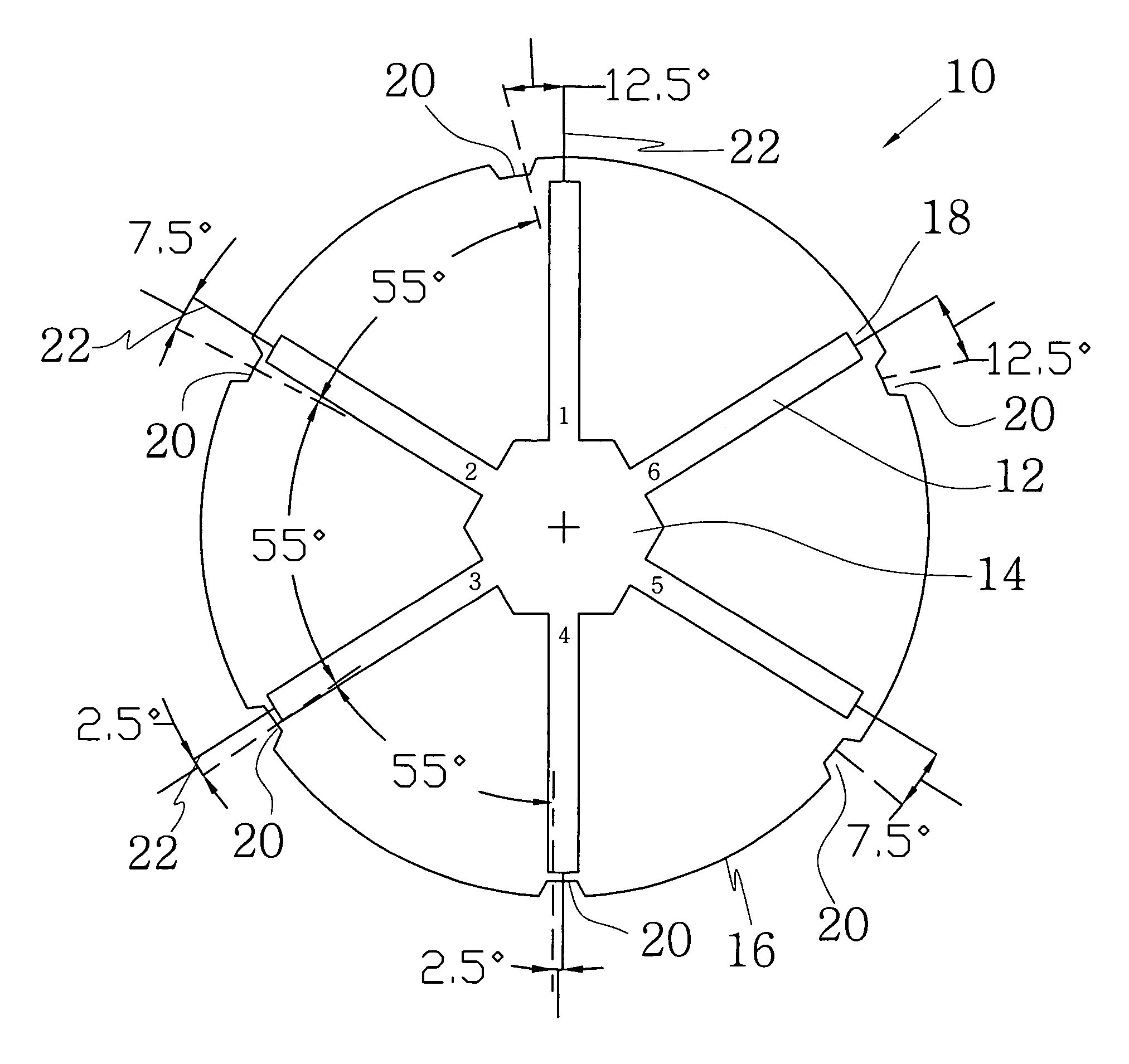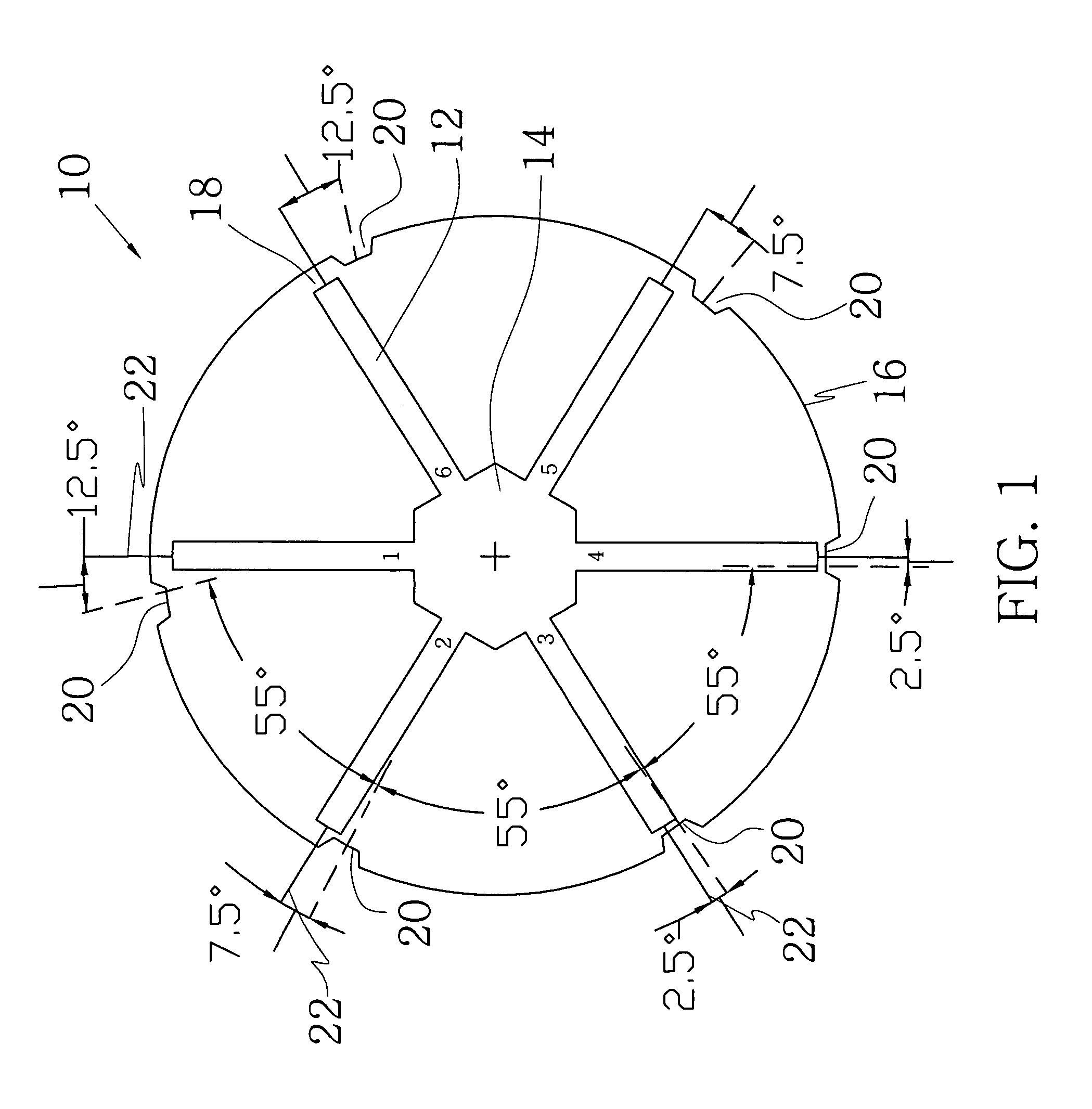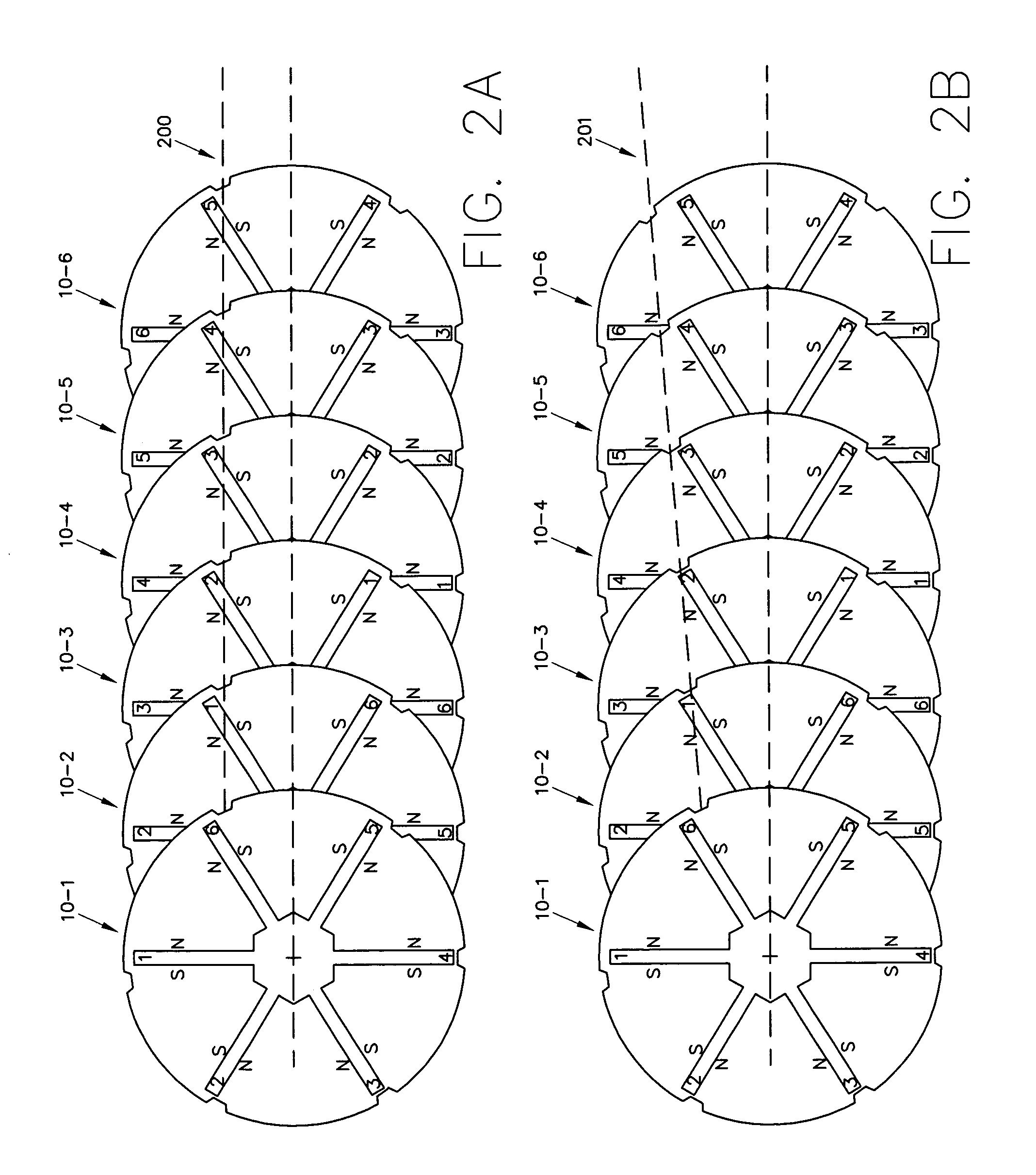Rotor assembly and stator assembly for an electrical machine
- Summary
- Abstract
- Description
- Claims
- Application Information
AI Technical Summary
Benefits of technology
Problems solved by technology
Method used
Image
Examples
Embodiment Construction
[0037]FIG. 1 schematically shows a sectional view through a lamination for forming a rotor assembly according to the present invention. The lamination 10 forms one axial section of the rotor body, having a generally cylindrical shape comprising slots 12 which radially extend from an inner opening 14 of the rotor body towards the outer periphery 16 thereof. A number of such laminations 10 are arranged on top of each other to form a rotor body having slots which extend radially and axially through the rotor body. Permanent magnets (not shown) will be embedded in the slots, wherein the laminations 10 form a magnetic core as well as a yoke of the rotor assembly. The configuration of the lamination 10 shown in FIG. 1 is adapted for an inner-rotor motor configuration wherein the inner opening 14 may be used for mounting the rotor body on a hub or a shaft. Of course, it is also within the scope of the present invention to provide an outer-rotor configuration in which the features of the ro...
PUM
 Login to View More
Login to View More Abstract
Description
Claims
Application Information
 Login to View More
Login to View More - R&D
- Intellectual Property
- Life Sciences
- Materials
- Tech Scout
- Unparalleled Data Quality
- Higher Quality Content
- 60% Fewer Hallucinations
Browse by: Latest US Patents, China's latest patents, Technical Efficacy Thesaurus, Application Domain, Technology Topic, Popular Technical Reports.
© 2025 PatSnap. All rights reserved.Legal|Privacy policy|Modern Slavery Act Transparency Statement|Sitemap|About US| Contact US: help@patsnap.com



